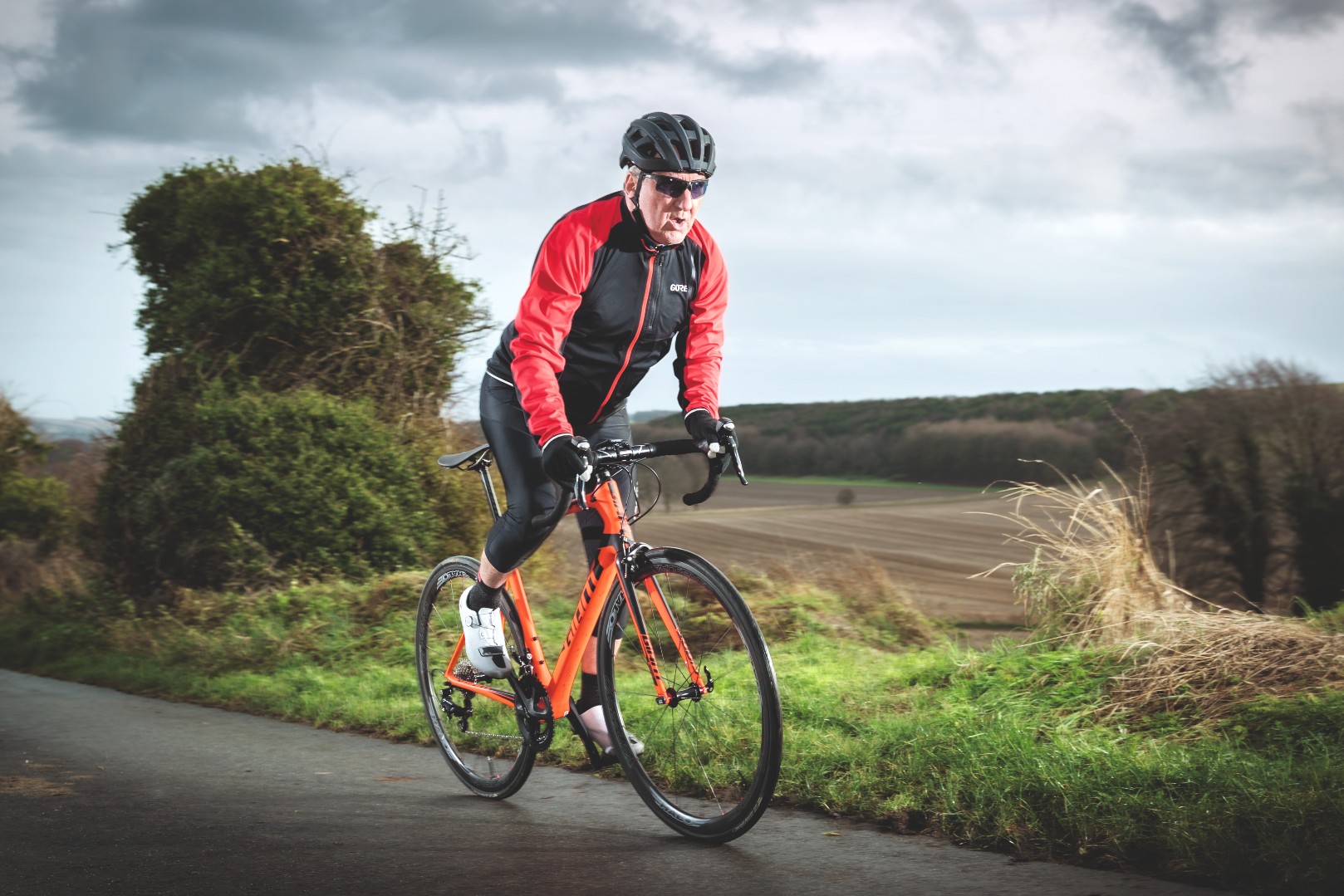Not long ago flat-barred road bikes were all the rage, combining the lightness of a road bike with the more upright riding position of an off-road machine. But one bit of cross-fertilisation that has rarely happened is the use of disc brakes on a road bike. There are definite advantages - increased rim life, better wet weather braking - although the trade-off does mean some extra weight.
So who might such a machine be aimed at? Well, I have a friend in London whose nine-mile all-weather commute takes in 26 sets of traffic lights. The combination of fast riding in all weathers, road-borne detritus rubbing on the rims and lots of braking - there's no red light jumping for him - means that in spite of a good maintenance regime (he used to work in a bike shop) he gets through rims at an alarming rate. If your experience is something like this, then Spanish firm Orbea's Diem Drop Disc, might well be worth serious consideration. So just how does this intriguing bike measure up as an urban warrior?
Frame - Understated, oversized carbon
It might be carbon, but this frame is no lightweight; the emphasis is on strength and solidity in spite of its racy appearance. There's plenty of clearance for mudguards, even with the 28mm tyres fitted to our test bike, but although there are eyelets for guards on the dropouts, and threads in the crown for bolts, you'd have to use a bit of imagination mounting a guard to the seatstays.
Considering that one of the applications for this bike would be as an all-weather commuting machine (and likely to be used in the wet) this could perhaps have been given a bit more thought. The cable routing around the hugely oversized head-tube, however, is both clever and elegant, using the maker's badge itself to guide the cables. The clips used on the frame for the rear brake and derailleur cables are equally neat, although slightly let down by the rear mech cable going through an unfinished hole in the hugely oversized bottom bracket area.
There are bottle cage mounts and, interestingly, bosses for a rear rack in the seatstays, though again this might take some careful fitting to take the rack away from the disc brake mountings.
Ride - solid and stable
The carbon frame and forks combined with its mudguard-free nature makes the Diem Drop Disc look at the outset like an all-out race bike, but don't be fooled: there are some significant differences. The Diem boasts a longer wheelbase than most road bikes, though in practice this wasn't really discernible. However, combined with a weight of over 22lb, it does mean you won't be throwing the bike around with total abandon, although it does make for stable, consistent handling, and when you put your foot down the acceleration is surprisingly and pleasingly rapid. The frame itself is pretty stiff too, with little flex evident through the bottom bracket area.
Whether descending Bath's more vertiginous hills or commuting along a rutted and gravelly canal towpath, the (carpe) Diem performed faultlessly and really did seize the day, although on the towpath I found it necessary to change to padded mitts from my unpadded winter gloves for a little more comfort.
The Diem Drop is an interesting bike, fusing different ideas into one elegant whole. Does it succeed entirely? Not quite - it's a little heavier than it looks and fi tting guards and a rack might require some imagination and ingenuity. But if you're a year-round, mile-eating rider looking to upgrade to a carbon fibre all-rounder, especially if rim life is a major consideration, then the Diem Drop might just hit the spot. It's just a surprise, given the advantages of disc brakes, that they're such a rare sight on urban machines, and following a recent thread on the bikeradar. com forum it seems there is a demand for such beasts. It'll be interesting to see just how well the Diem Drop does in setting a new trend.
Equipment - strong wheels, decent components
The most obvious difference with these hoops compared to most of those in the pages of Cycling Plus is that these come with disc brakes (though they are compatible with rim brakes). Yes, this makes them heavier, but if you're a high mileage commuter who gets through brakes like they're going out of fashion, then it's an option well worth considering.
The spokes are straight pull with the nipples in the hubs. This can make adjusting them tricky, but - and it's a big but - because the rims aren't used for braking, if they're dinged out of shape a millimetre or two by our pothole and litter-strewn roads it's less of an issue.
The hubs themselves are solid and well constructed, and allied to the Continental tyres these rolled well. It's pretty much bang up to the mark for the sort of urban riding this machine's likely to be used for.
You can't really go wrong with Shimano 105 kit, they must have thought at Orbea, and they're right.
Shimano's third-string groupset provides the levers, triple chainset, front mech and bottom bracket, with a probably unnecessary upgrade for the rear mech. But the stand-out components have to be Shimano's mechanical disc brakes. Designed specifically for road levers, these perform about as well as a decent set of callipers - not as outstandingly as hydraulic discs - but significantly there'll be only marginal performance drop-off in the wet. Combined with a much, much longer rim life, this is the Diem Drop's major selling point and something that distinguishes it from just about every other road bike on the market.
The rest of the kit is all decent quality, with no obvious highlights but equally nothing to take away from the impression that you're riding a high quality machine.





